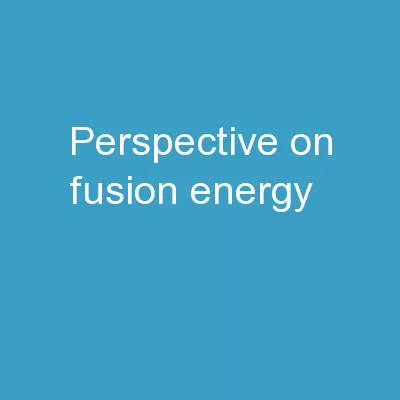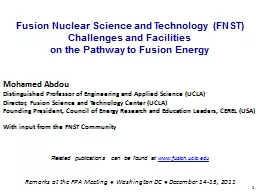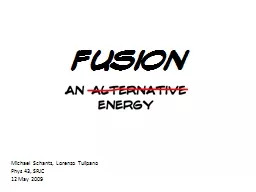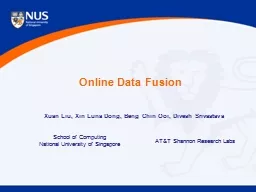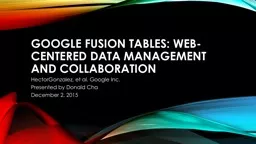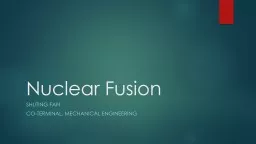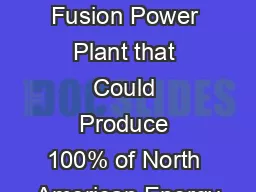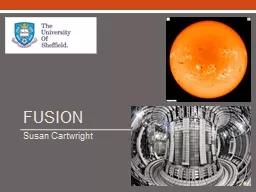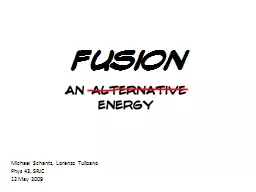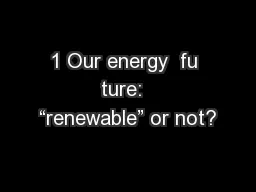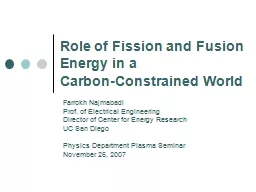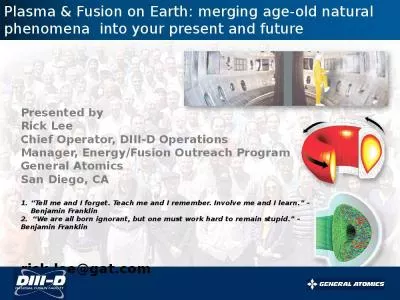PPT-Perspective on Fusion Energy
Author : briana-ranney | Published Date : 2019-03-16
Strategy By Tony S Taylor With M Wade W Solomon Presented at NAS Committee for a Strategic Plan for US Burning Plasma Research August 29 2017 Fusion Energy is
Presentation Embed Code
Download Presentation
Download Presentation The PPT/PDF document "Perspective on Fusion Energy" is the property of its rightful owner. Permission is granted to download and print the materials on this website for personal, non-commercial use only, and to display it on your personal computer provided you do not modify the materials and that you retain all copyright notices contained in the materials. By downloading content from our website, you accept the terms of this agreement.
Perspective on Fusion Energy: Transcript
Download Rules Of Document
"Perspective on Fusion Energy"The content belongs to its owner. You may download and print it for personal use, without modification, and keep all copyright notices. By downloading, you agree to these terms.
Related Documents

